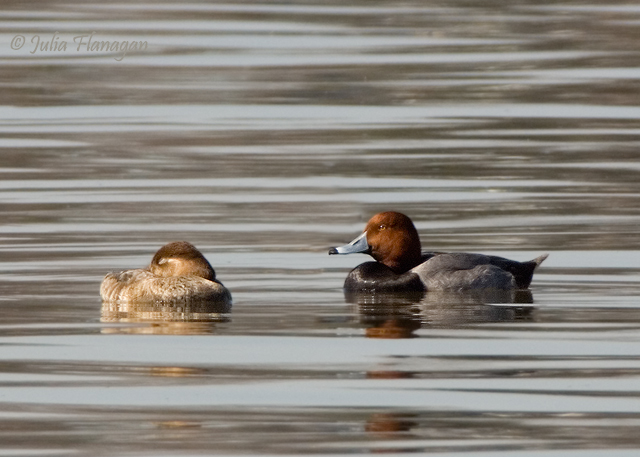 |
Redhead Aytha Americana Family: Anatidae Redhead egg laying behavior is of three types: normal (the hen incubates her own eggs), semiparasitic (some eggs laid in her own nest, some in another bird’s nest), and parasitic (all of the eggs laid in a foreign nest). The Redhead lays eggs in the nests of other Redheads, at least 10 other duck species, and even in the nests of the American Bittern and Northern Harrier. This parasitic behavior does not do the duck much good, since many of the parasitically laid eggs fail to hatch. Often, the hen will lay her eggs in another nest after the other duck has completed incubation of her own eggs. Thus the Redhead’s eggs are not incubated and go to waste. Some of this odd female Redhead behavior may relate to odd behavior on the part of the male. Redheads do not seem to defend any portion of their selected home range. In addition, when the females start to incubate the eggs, the males abandon the family. This behavior does in turn result in a high rate of nest abandonment. Surprisingly, in spite of a high (80%) mortality rate for immature Redheads, the population is stable in the wild. In cases where the hen incubates her own eggs, she emits a low kuk-kuk-kuk sound just before the eggs hatch. With this sound, the young are imprinted to follow her when they hatch. The mother leaves the juveniles when they are able to fly. Redheads sometimes forage at night. Ninety percent of their diet is vegetation. This diving duck feeds in the shallows but can dive as deep as 14 meters for a meal. True to its name, this duck has a red head. It has a gray body and yellow eyes. The oldest known Redhead lived 22 years, 7 months after it was banded. |





